How Many Hazelnut Trees Can You Grow per Hectare?
Hazelnut trees are a great addition to any orchard or backyard since they are easy to grow, require minimal maintenance, and produce delicious and healthy nuts. You can expect to grow several hazelnut trees per hectare, depending on the species and variety. In this article, you'll find exactly how many hazelnut trees you can squeeze into a hectare of land.
You can plant between 200 and 800 hazelnut trees on a hectare of land, depending on the species selected. Now, depending on spacing, a spacing of 4 x 5 meters can result in a density of 500 hazelnut trees per hectare.
Aside from the variety and spacing, the exact number of trees you can plant per hectare will also depend on the specific conditions of your growing area. Let's take an in-depth look at how this can affect the density of hazelnut trees in a hectare.
Summary
- European hazelnut trees generally require greater spacing compared to American hazelnut and beaked hazelnut trees due to their larger size and spreading canopy.
- Narrower spacings between hazelnut trees (for example, a spacing of 4 x 5 m) allow for higher tree density per hectare (500 trees/ha), while wider spacings (ex. 6 x 6 m spacing) result in lower tree density (277 trees/ha).
- Fertile soil and ample water availability support a higher planting density of hazelnut trees (estimated 500 to 1000 trees/ha), while poorer soil quality or limited water availability may necessitate a lower planting density (estimated range of 250 to 500 trees/ha) to ensure optimal growth and productivity.
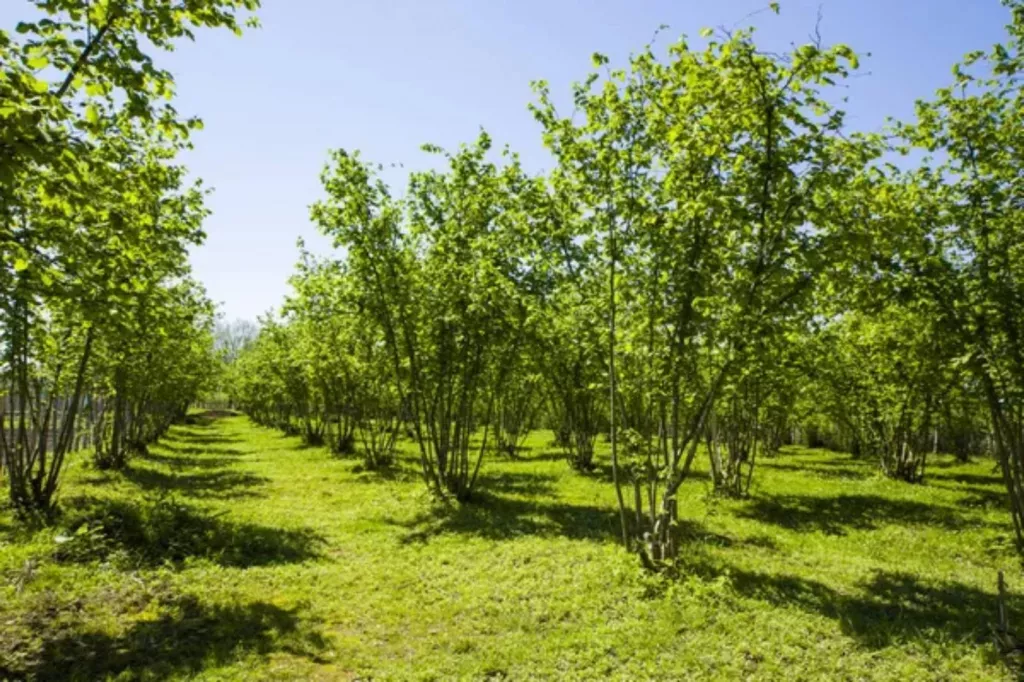
On this page:
Tree Density per Hectare Based on Hazelnut Species
The table below shows the different varieties of hazelnut trees and their estimated density per hectare:
| Hazelnut Species | Estimated Tree Density per Hectare |
|---|---|
| American hazelnut | 300-500 |
| European hazel | 500-800 |
| Beaked hazel | 200-400 |
The variety of hazelnut trees chosen can significantly affect the number of hazelnut trees that can be planted in a hectare due to various factors such as the following:
Their different growth habits
Different hazelnut varieties have varying growth habits, including the spread of their canopy and their overall size. Two of the most popularly known common nut trees are the American hazelnut and the European hazelnut.
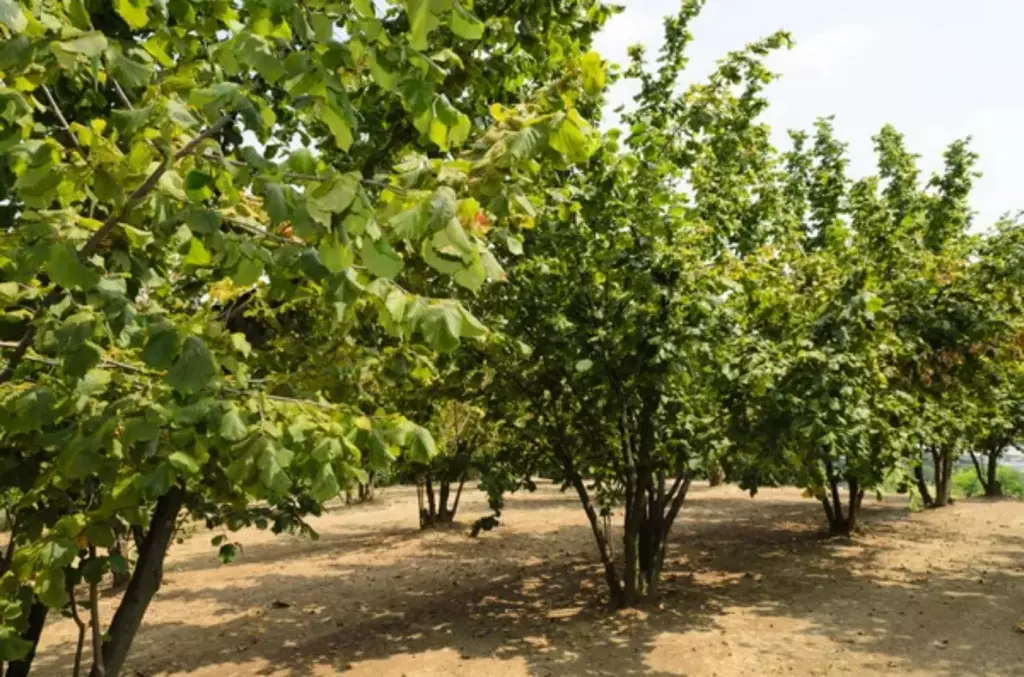
The American hazelnut (Corylus americana) tends to have a more spreading growth habit compared to the European hazel (Corylus avellana).
This means that the spacing between American hazelnut trees may need to be wider to accommodate their spreading nature, impacting the number of trees that can be planted per hectare.
Their size at maturity
Varieties with larger mature sizes will require more space between trees to allow for proper growth, while smaller varieties may be planted more densely.
Beaked hazelnut trees are similar in size to the American hazelnut, reaching heights of 10–15 feet with a similar spread. They also have a spreading growth habit.
Meanwhile, European hazel trees are known to reach heights of 12–20 feet with a similar spread. They often have a more upright growth habit compared to the American hazelnut.
Due to this, European hazel trees typically require greater spacing compared to American hazelnut and beaked hazelnut trees due to their larger size and more spreading canopy.
Their spacing requirements
Each hazelnut variety has specific spacing requirements for optimal growth and yield. These requirements are influenced by factors such as root spread, light interception, and air circulation.
For example, European hazel trees generally require greater spacing compared to American hazelnut trees due to their larger size and spreading canopy.
Density per Hectare Based on Spacing
The table below shows how the estimated tree density (trees/ha) varies based on the spacing used:
| Spacing (m) | Estimated Tree Density (trees/ha) |
|---|---|
| 4 x 5 | 500 |
| 4 x 6 | 416 |
| 5 x 5 | 400 |
| 6 x 6 | 277 |
When the spacing is 4 x 5 meters, the estimated tree density is 500 trees per hectare. This means that by planting hazelnut trees with this spacing, a farmer can plant 500 trees in one hectare of land.
Similarly, with a spacing of 4 x 6 meters, the estimated tree density decreases to 416 trees per hectare. This indicates that by increasing the distance between rows to 6 meters, the number of trees that can be planted in a hectare decreases.
Further, a spacing of 5 x 5 meters results in an estimated tree density of 400 trees per hectare, while a spacing of 6 x 6 meters leads to a much lower estimated tree density of 277 trees per hectare.
In general, the spacing between hazelnut trees directly impacts the number of trees that can be accommodated in a hectare. Narrower spacings allow for more trees to be planted, leading to higher tree density per hectare, while wider spacings result in lower tree density.
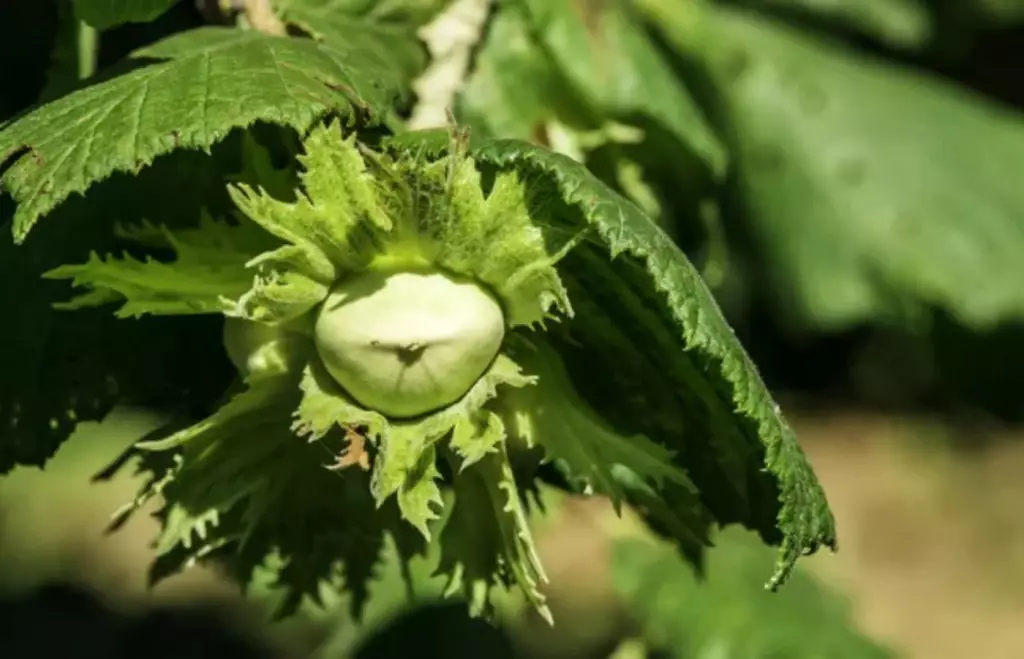
Farmers and growers must carefully consider the trade-offs between tree density and spacing when planning hazelnut orchards, as it can impact factors such as resource utilization, tree growth, and overall yield. You can read this article to find more useful tips when planning for a hazelnut farm.
Growing Conditions Affecting Tree Density
The exact number of hazelnut trees that can be planted per hectare depends on several specific conditions of the growing area. These growing conditions include the following:
| Factors | Influence on Hazelnut Planting Density |
|---|---|
| Soil type | Determines the availability of nutrients and water retention, influencing the spacing of hazelnut trees |
| Climate | Affects the overall health and growth of hazelnut trees, influencing the number that can be planted per hectare |
| Topography | Slope and elevation impact water drainage and sun exposure, influencing the optimal planting density for hazelnut trees |
Soil type influences the spacing of hazelnut trees
In areas with fertile soil and ample water, a higher density of hazelnut trees can be planted per hectare due to the availability of resources to support the growth and development of the trees.
Fertile soil provides essential nutrients necessary for the healthy growth of hazelnut trees, while ample water ensures that the trees have an adequate water supply for photosynthesis, nutrient uptake, and overall hydration.
A higher planting density in such areas can lead to increased productivity and yield per hectare. The trees can benefit from the abundant resources available, and the competition for water and nutrients can be effectively managed due to the favorable conditions.
Additionally, the proximity of trees can create a microclimate that helps to retain moisture and provide shade, further supporting the growth of the hazelnut trees.
Conversely, in areas with poorer soil quality or limited water availability, a lower planting density may be more suitable to ensure the trees have enough resources to thrive.
In such conditions, hazelnut trees may struggle to access the necessary nutrients and water for optimal growth and productivity.
Therefore, reducing the planting density can help alleviate competition for limited resources and ensure that each tree has access to the essential elements required for healthy development.
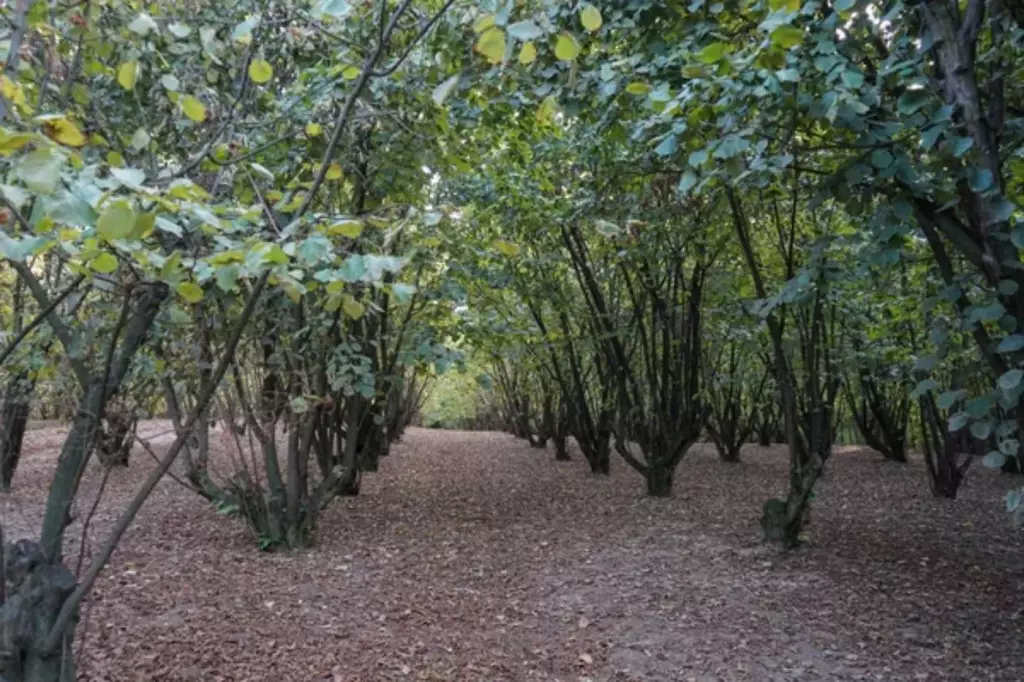
The climate determines the number of hazelnut trees per hectare
Several climate-related factors directly influence the optimal planting density for hazelnut orchards:
Hazelnut trees have specific temperature requirements
In regions with colder climates, the planting density may need to be adjusted to ensure that each tree receives adequate warmth and sunlight for growth.
Conversely, in warmer climates, the planting density may be adapted to prevent overcrowding and competition for resources.
Adequate water supply is essential for hazelnut tree growth
The amount and distribution of precipitation in a given climate directly impact the water availability for the trees. In areas with higher precipitation, the planting density may be adjusted to accommodate the natural water supply and prevent waterlogged conditions.
Conversely, in drier climates, the planting density may need to be lower to ensure that each tree can access sufficient water for healthy growth.
Humidity can also affect the trees' overall health
The level of humidity in the air can influence disease susceptibility and overall tree health. In regions with high humidity, there may be a need to space the hazelnut trees more widely to promote air circulation and reduce the risk of fungal diseases.
Meanwhile, in drier and less humid climates, the planting density may be adjusted to maximize land use while minimizing disease pressure. To learn more about the diseases that affect hazelnut trees' productivity, you can read this article.
Topography influences the optimal planting density for hazelnut trees
Both slope and elevation impact water drainage and sun exposure, which in turn affect the overall health and productivity of the hazelnut trees.
The slope is a critical factor in water drainage. Steep slopes can lead to rapid water runoff, which can cause soil erosion and poor water retention.
In such areas, planting hazelnut trees at higher densities can help mitigate erosion and soil loss by providing more root structure to stabilize the soil.
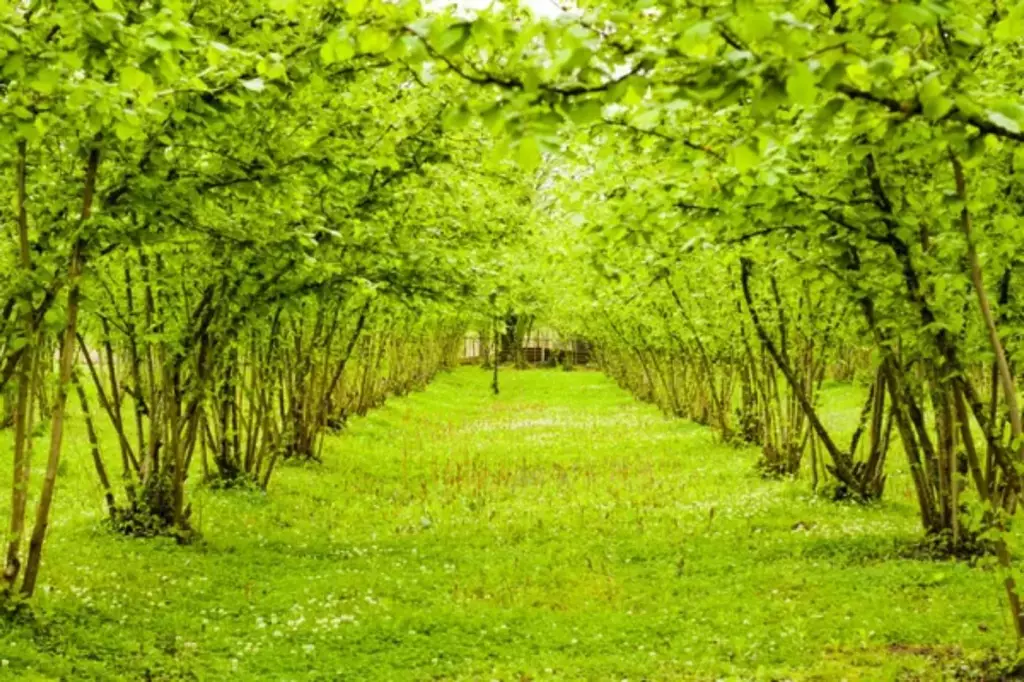
On the other hand, areas with gentle slopes may have better water retention, allowing for lower planting densities as the soil can support the trees adequately.
Elevation also influences water drainage and sun exposure. Higher elevations may experience cooler temperatures and increased precipitation, which can impact the water availability for the hazelnut trees.
Additionally, sun exposure at different elevations can vary, affecting the overall growth and development of the trees. In higher elevations, planting densities may need to be adjusted to account for lower temperatures and potential frost risks.



